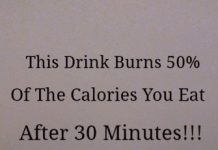If you like sumo wrestling you might like to know about sumo wrestling rules and regulations that make this traditional sport more interesting.
Before you take a look at sumo wrestling rules, why not take a look at some of its facts.
- There are six major Sumo tournaments (basho) each year, happens in every odd month of the year. Three are held in the capital, Tokyo (January, May and September) and one each in Osaka (March), Nagoya (July) and Fukuoka (November).
- Professional sumo is divided into 6 ranked divisions (makuuchi, jūryō, makushita, sandanme, jonidan and jonokuchi). Wrestlers are promoted and demoted within and between these divisions based on the merit of their win/loss records in official tournaments.
- Each sumo wrestlers belongs to a gym (heya) and live in a lifestyle that is completely dedicated to the sport and its traditions.
10 Basic Sumo Wrestling Rules and Regulations
Rule 1
Sumo wrestling rules are extremely simple. To begin with, it must be stressed that there are no different categories according to the weight of wrestlers like we see in other wrestling sports.
Rule 2
Opponents are called rikishi and fighting area is called dohyo, a circle that is covered by the sand. On the center, there are two lines where players must position themselves before starting of the wrestling.
Rule 3
This is one of the most basic sumo wrestling rules. The goal of each sumo fighter is to send his opponent out of the ring (dohyo) or to get any part of his body (except the soles of the feet) off the ground.
Rule 4
In case of absence of one of the opponents at the time of the bout, the absent wrestler can be disqualified.
Rule 5
The fighters must not– pull the hair, attack the eyes or hit opponent with a closed fist.
Rule 6
The fight begins when both of the fighters touch their on the dohyo. It is assumed that both rikishi must touch with both hands before starting. A false start (Matta) occurs when a rikishi starts before the other and is currently punishable by a fine.
Rule 7
A fighter who uses an illegal technique (beatings, strangulation, or joint dislocations, etc.) is eliminated.
Rule 8
If a fighter loses the clothing worn during a bout, it is eliminated.
Rule 9
Sometimes the two rikishi fall simultaneously and if the winner is not very clear, the gyoji must indicate one. Judges can then get on the dohyo to deliberate, to what is called “mono-ii”. The end result may be the ratification of the arbitrator’s decision, change its decision or to call the both two rikishi to repeat the match.
Rule 10
When it comes to sumo wrestling rules you must know before each bout the Shinto rituals are performed as sumo wrestling is a traditional sport this is an important part of the game.










